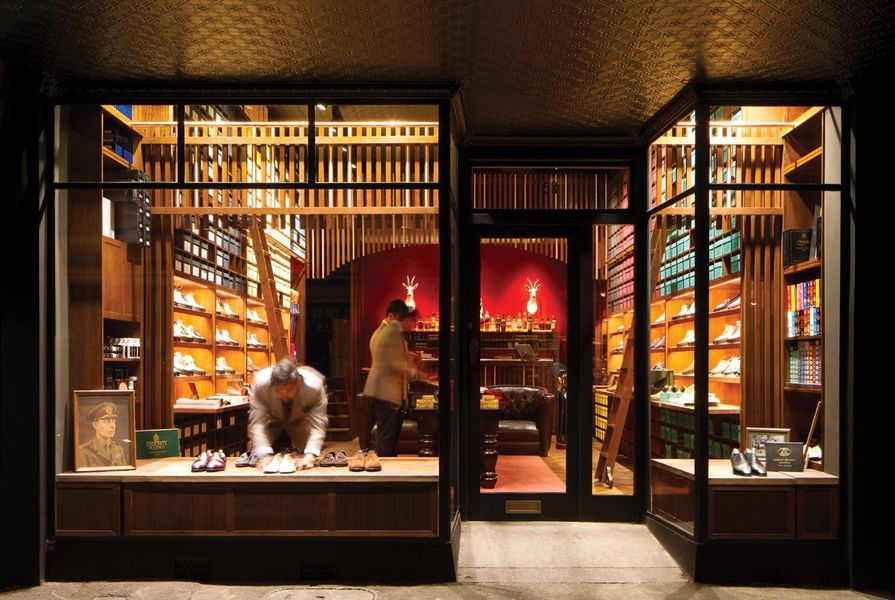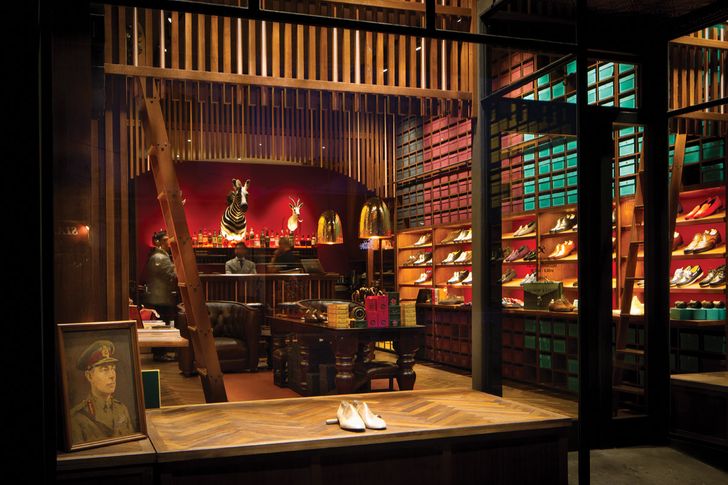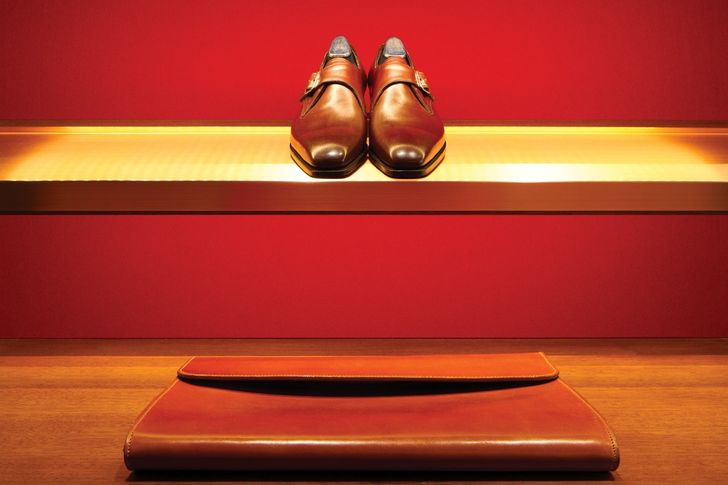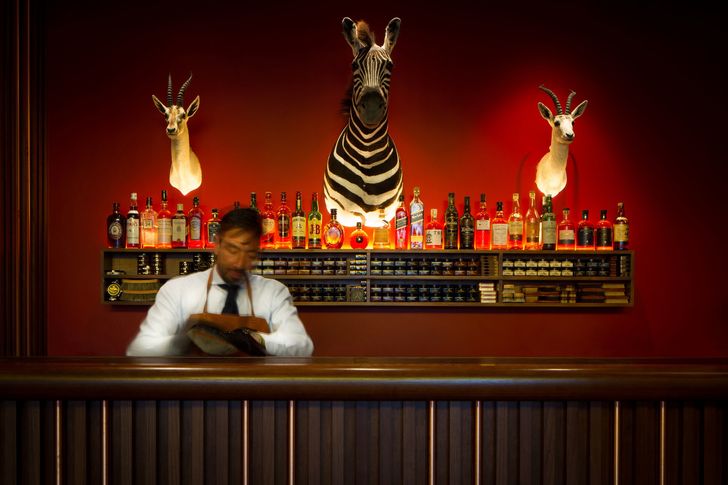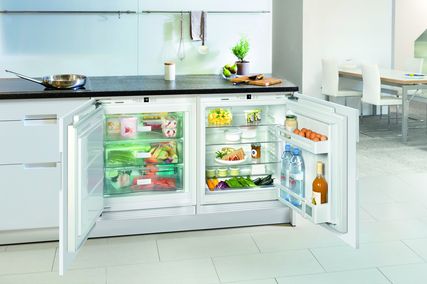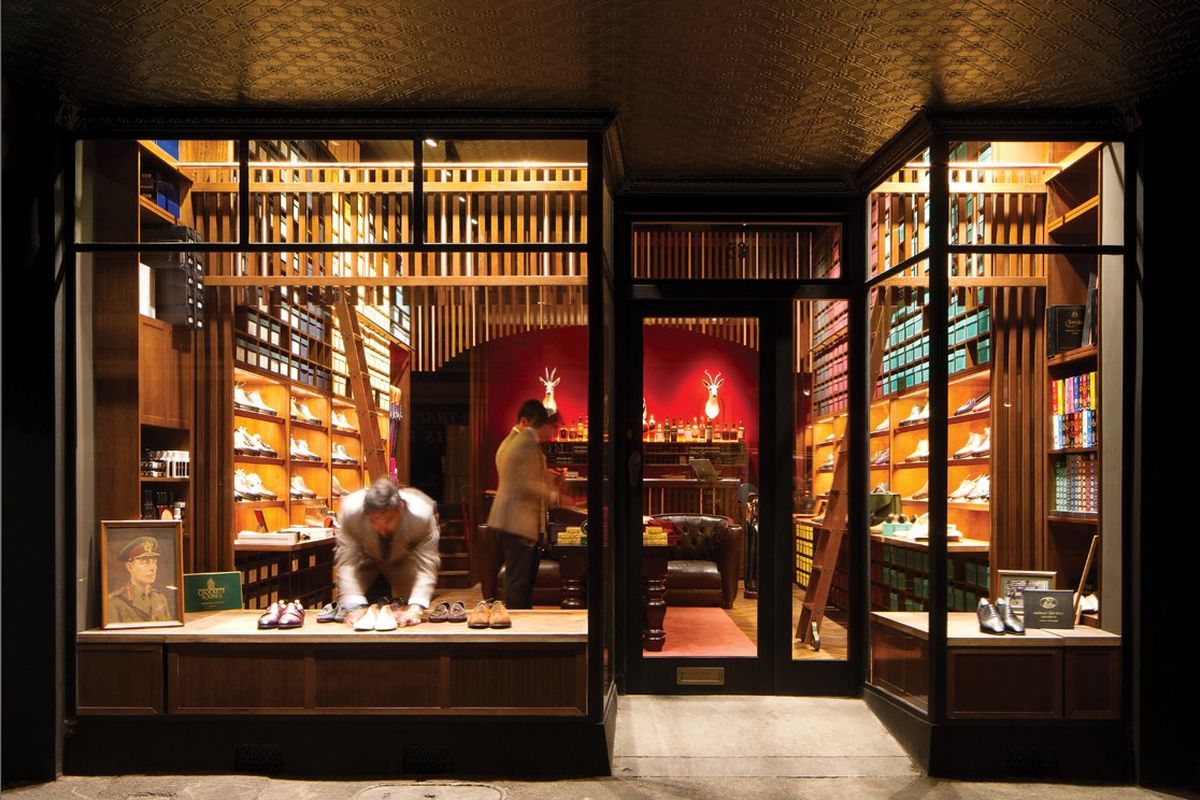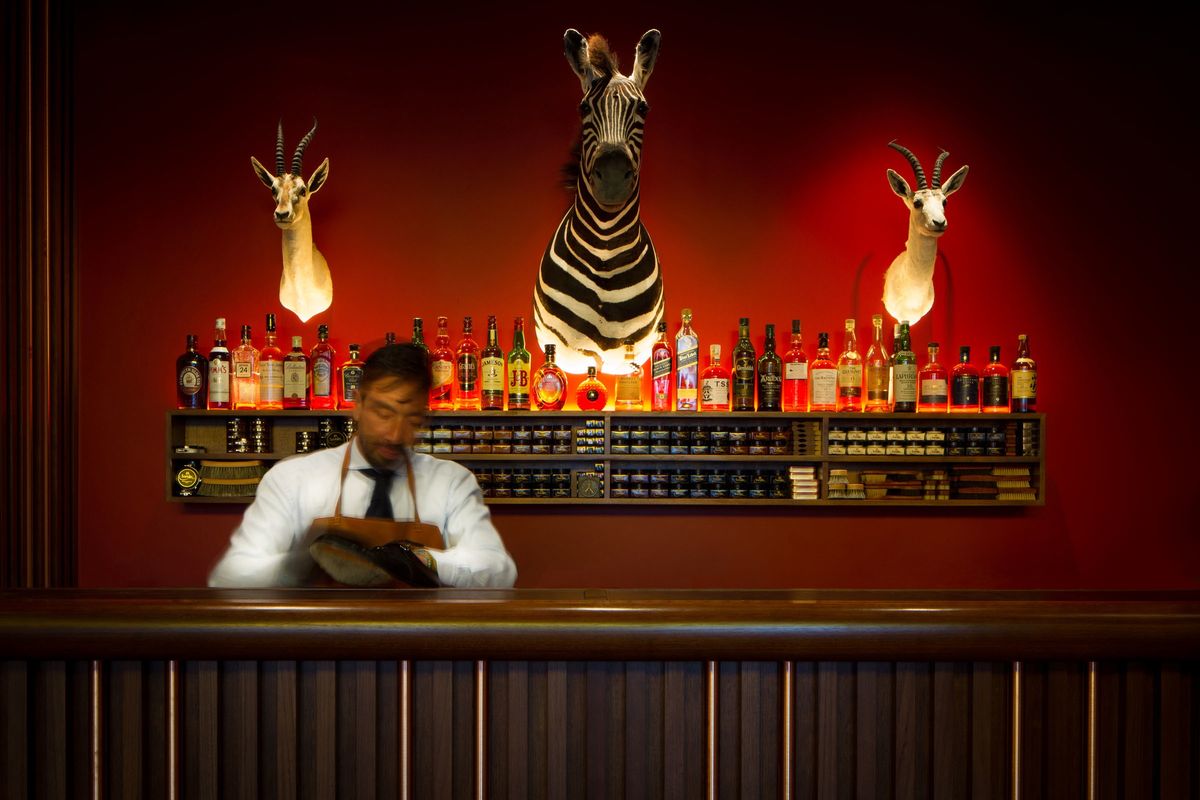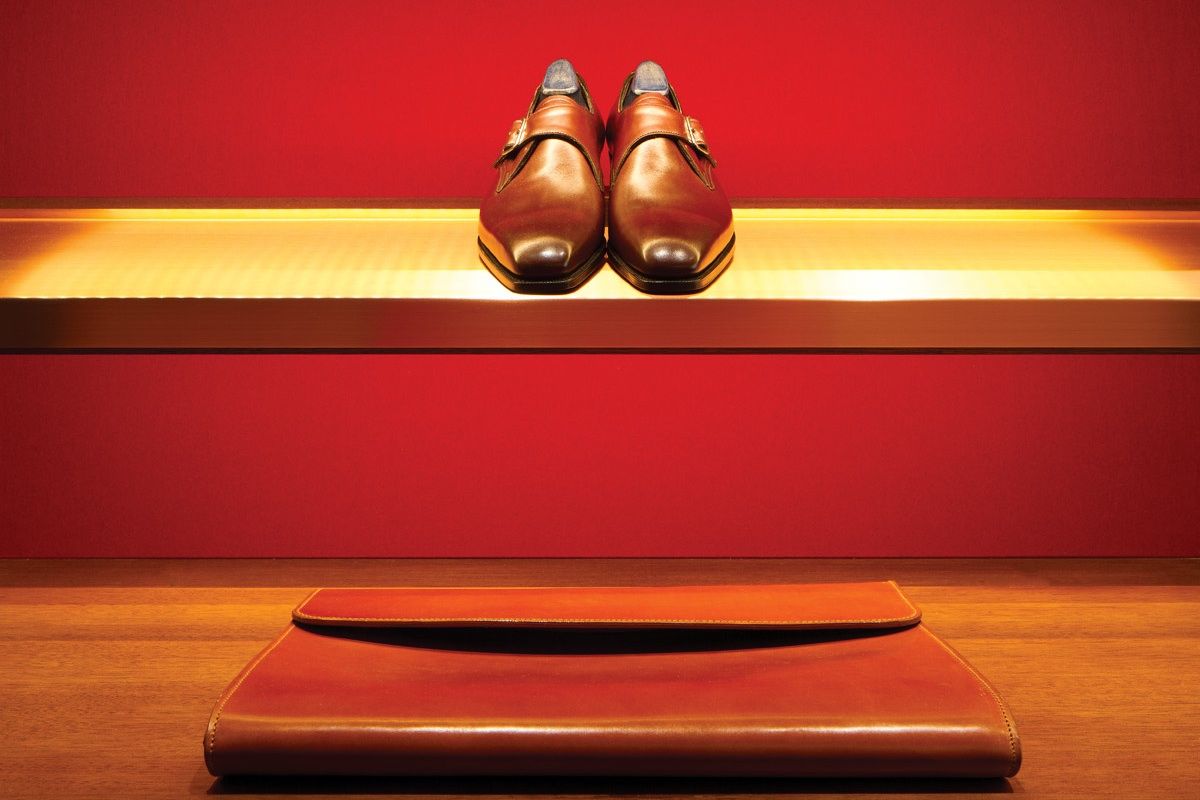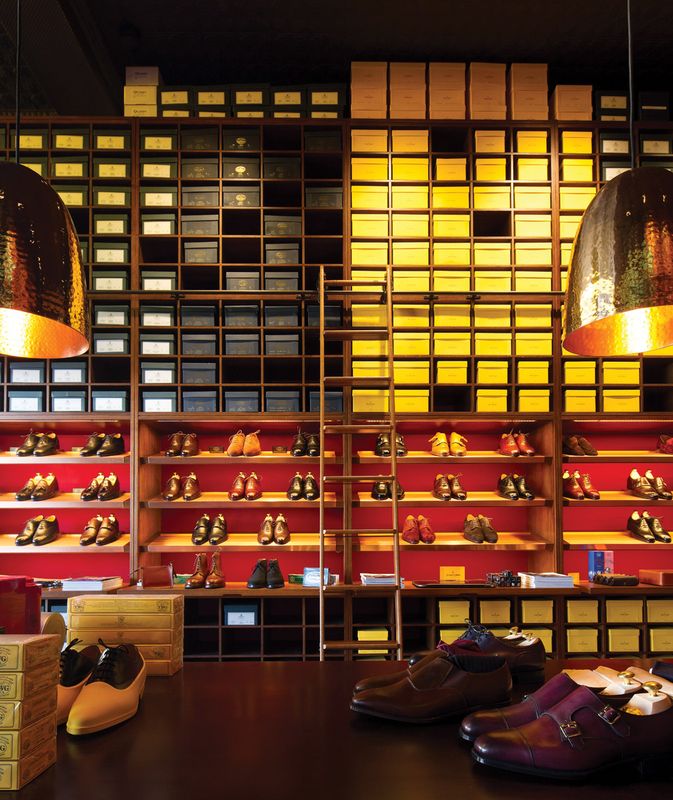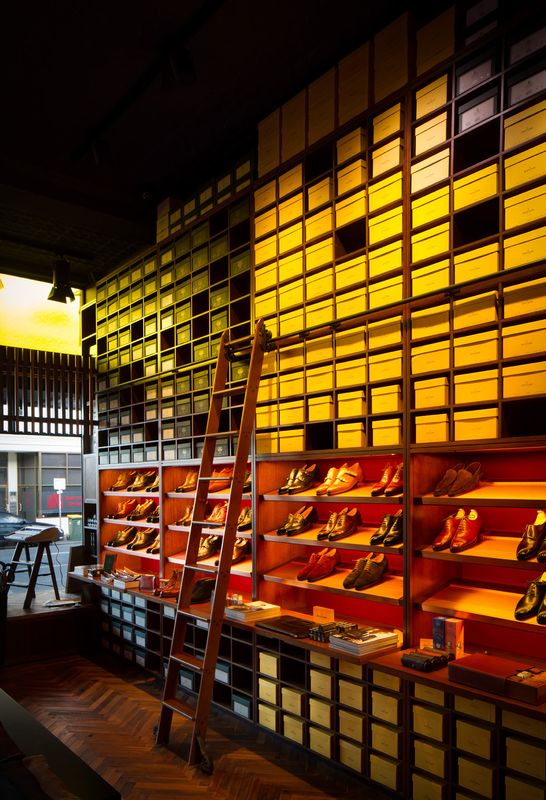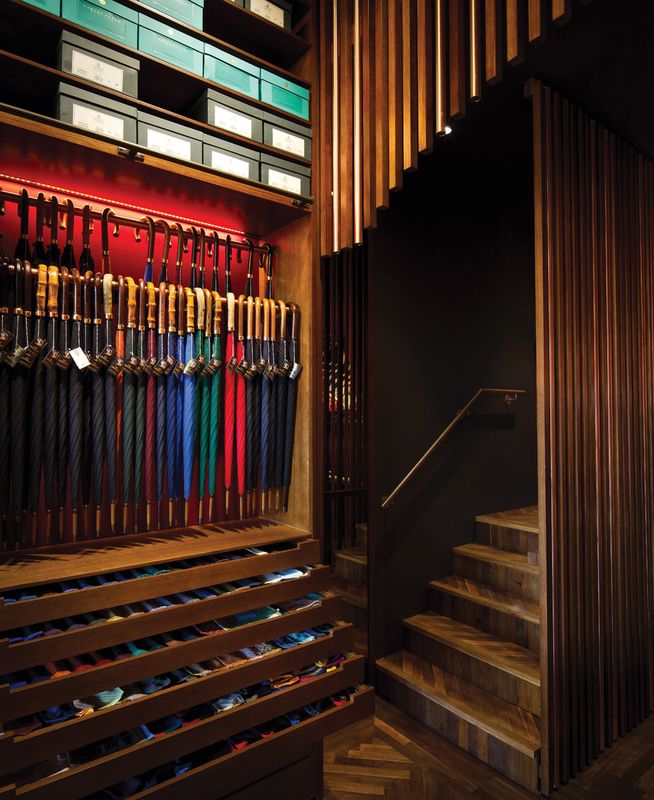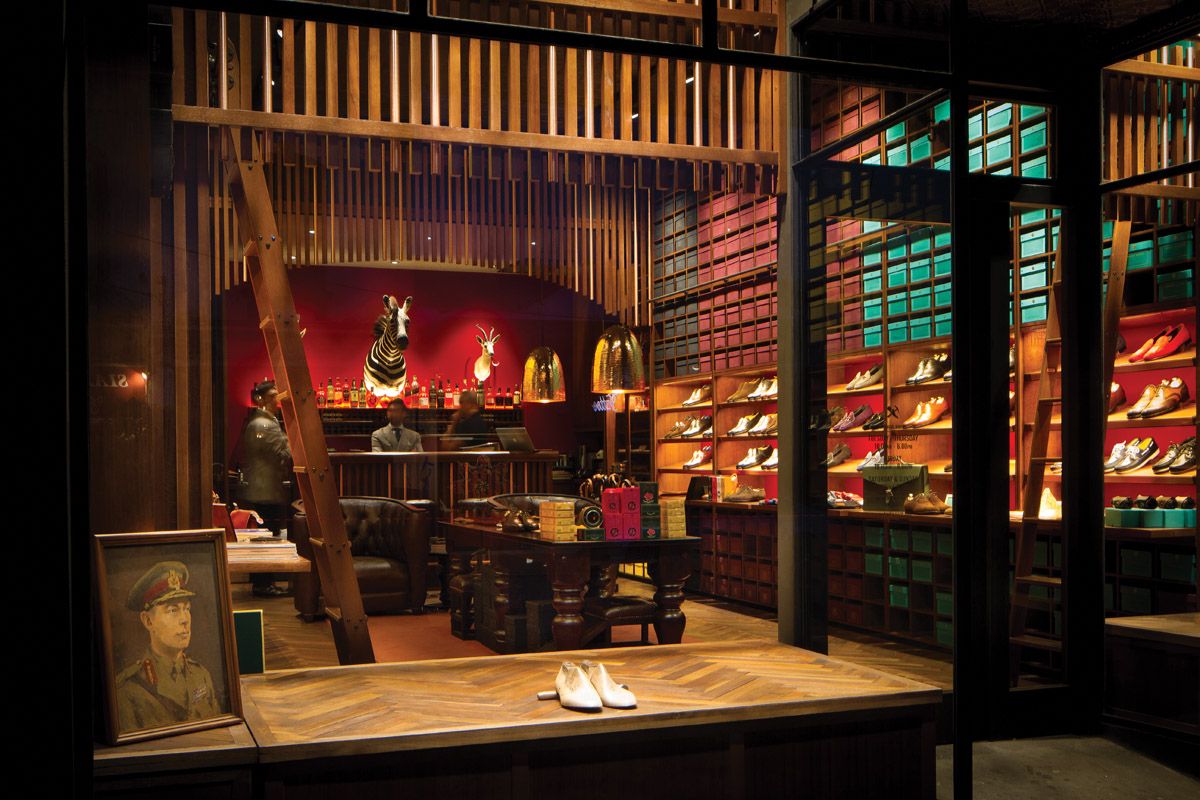The double monk is a double-buckled gentleman’s dress shoe. Appropriately, the shoe store in Smith Street in Melbourne’s Fitzroy that has adopted the name speaks to the Beau Brummell and recalls spaces traditionally associated with masculinity: the den, the club, the salon, the library.
The shop, designed by MRTN Architects, is a comprehensive shoe library, hosting a range of fine shoes made by London craftspeople. Dusty pink, lemon and duck-egg-blue shoeboxes sit snugly within purpose-built, floor-to-ceiling timber shelves and are carefully catalogued according to colour – an allusion to the nineteenth-century obsession with display and classification. The mobile timber ladders, the custom-built leather Chesterfields, the portrait of a soldier in uniform and the hand-stained oak parquetry flooring reinforce themes of tradition, masculinity and British propriety.
MRTN Architects director Antony Martin explains, “There is no stock room; all merchandise is on display.” The black pressed-metal ceiling and steel shopfront are recessive, bringing the products into focus. Hammered copper pendant lights hang over a muscular central display table and draw the customer’s gaze to the neatly stacked curiosities that accompany the shoes: delicately packaged teas, peppermints, toothpaste, umbrellas and, of course, shoe wax.
Library ladders, Chesterfields and oak parquet flooring evoke a British tradition.
Image: Nic Granleese
The shoes themselves are displayed on the library shelves in pairs, not as singles as is the convention, and are positioned carefully on custom-fabricated copper stands. Operable joinery makes for a physically engaging display – shelves roll out smoothly and deep drawers are purposely left open to showcase a wider range of products.
With some designs upward of $1200 a pair, these shoes are not walking out the door in a hurry, but that is not the intention. The owners, brothers Nick and Chris Schaerf, are unconcerned with fashionability. Instead, Double Monk is joining a new generation of small businesses in Melbourne that are drawing on an old-fashioned approach to business – think American Tailors for a younger, more flamboyant audience – providing bespoke quality products, superior service and ongoing post-purchase care. Slow food, slow fashion and now slow shoes.
The shoes are displayed in pairs, not as singles as is the convention.
Image: Nic Granleese
This attitude to retail requires a level of theatre so as to establish a sense of loyalty and trust in the customer. MRTN Architects’ design exploits the sales counter as a venue to help facilitate this. At Double Monk the counter sits conventionally at the rear of the store, but also functions as a shoeshine station and bar and is framed by a fringe of suspended timber and copper battens. Guests are invited to make themselves comfortable at the well-stocked bar and share a drink and a story, while they have their shoes buffed and polished with imported specialty leather-care products.
Guests are invited to make themselves comfortable at the well-stocked bar.
Image: Nic Granleese
While the shop fitout employs a relatively restrained material palette – copper, dressed timber, leather, felt and rubbed bronze – colour and texture also play an essential part in the theatre of the store. Amber stained-glass highlight windows, sitting above the awning and imperceptible from the street, set the store awash in sepia tones. Martin – who previously practised in New York City, where he designed a number of high-end menswear stores – cites the Campbell Apartment at Grand Central Station as an important precedent for the Double Monk store. Its influence is apparent in the lighting strategy – ambient lighting is kept low and moody, while displays are softly highlighted with concealed recessed strip lights. The store is bathed in a yellow glow throughout the day and at night, at once capturing the mood of a bygone era and positioning itself in opposition to the retail status quo, which tends to favour stronger, whiter and more pervasive lighting.
The selection of finishes has almost certainly been informed by the material qualities of the product and its packaging. Lifting the lid off one of the shoeboxes reveals delicately folded tissue paper enveloping a felt drawstring bag containing the shoes. In the design for the fitout this tactility is translated in various ways: red felt sourced from local pool-table manufacturers Harry Evans and Sons serves as a backdrop to the shoes on display; leather upholstery and countertops take their cues from the shoes themselves. A plush musk-coloured rug draws attention to the dusty pink boxes on the shelves above. Taxidermy is another invitation to the customers to form a haptic engagement with the store, but also fits in well with the narrative of Victorian opulence and serves as a confrontational reminder of the varied outputs of the tanning trade.
MRTN Architects’ design concept for Double Monk represents the values that underpin the label – quality, craftsmanship, longevity and sophistication. Its levity and flamboyance are appropriate given its location amid Smith Street’s bars and eateries. The salon metaphor is adopted not as a response to context, but as a manifestation of the Double Monk identity. The salon projects an image of exclusivity, decorum and refinement. The real talent here is in the finetuning of the elements that create the mise en scène, and Martin has achieved this through his considered approach to lighting, material restraint, visual and tactile engagement, and clever programmatic overlap.
Products and materials
- Walls and ceilings
- Timber stain and eggshell varnish from Grimes and Sons. Felt from Harry Evans and Sons. Copper sheeting from George White.
- Windows
- Skyrange steel windows.
- Doors
- Custom door pull.
- Flooring
- Parquet flooring from The Salvage Company. Loose rug from Supertuft.
- Lighting
- LED lighting from Light Project. Track lighting from Euroluce. Pendant lights from Dunlin.
Credits
- Project
- Double Monk
- Design practice
- MRTN Architects
Melbourne, Vic, Australia
- Project Team
- Antony Martin, Sabrina Meyers, Simon Jenkins
- Consultants
-
Builder
Krueger Shopfitters + Commercial Interiors
- Site Details
-
Location
53 Smith Street,
Fitzroy,
Melbourne,
Vic,
Australia
- Project Details
-
Status
Built
Design, documentation 3 months
Construction 3 months
Category Interiors
Type Retail
Source
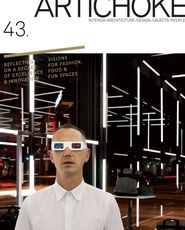
Project
Published online: 19 Nov 2013
Words:
Jacqui Alexander
Images:
Nic Granleese
Issue
Artichoke, June 2013

